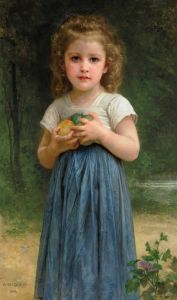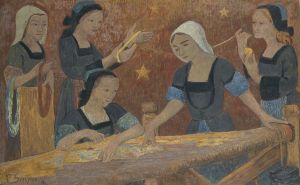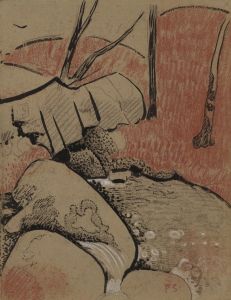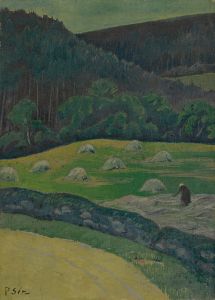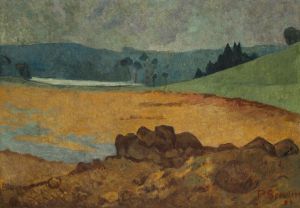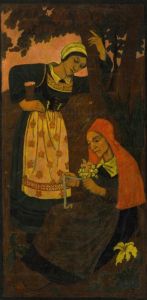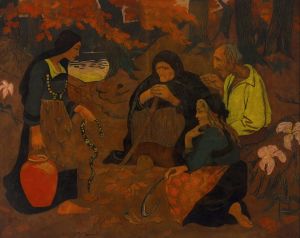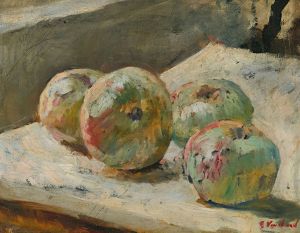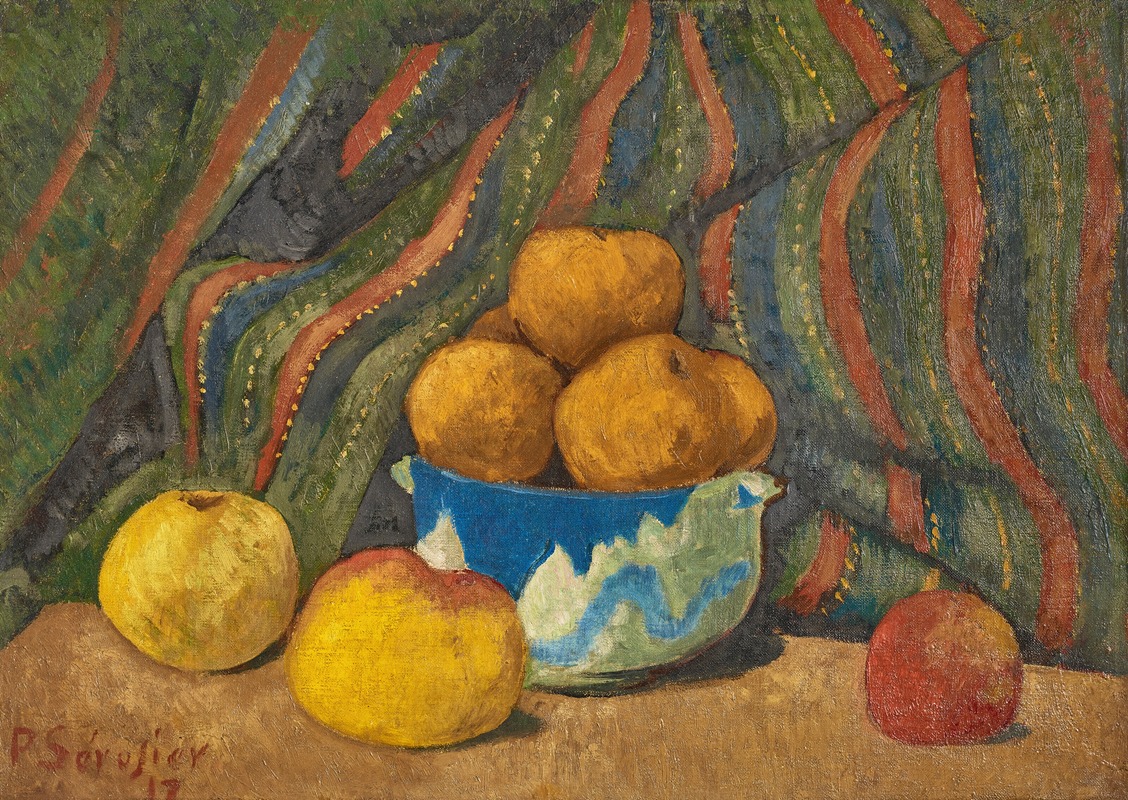
Nature morte aux pommes, sur fond de tenture rayée
A hand-painted replica of Paul Sérusier’s masterpiece Nature morte aux pommes, sur fond de tenture rayée, meticulously crafted by professional artists to capture the true essence of the original. Each piece is created with museum-quality canvas and rare mineral pigments, carefully painted by experienced artists with delicate brushstrokes and rich, layered colors to perfectly recreate the texture of the original artwork. Unlike machine-printed reproductions, this hand-painted version brings the painting to life, infused with the artist’s emotions and skill in every stroke. Whether for personal collection or home decoration, it instantly elevates the artistic atmosphere of any space.
"Nature morte aux pommes, sur fond de tenture rayée" is a still life painting by the French artist Paul Sérusier. Sérusier, born on November 9, 1864, in Paris, was a prominent figure in the Post-Impressionist movement and a key member of the artist group known as Les Nabis. This group, which included artists like Pierre Bonnard and Édouard Vuillard, was influential in the transition from Impressionism to more abstract and symbolic forms of art.
The painting "Nature morte aux pommes, sur fond de tenture rayée" exemplifies Sérusier's interest in exploring color, form, and composition beyond the naturalistic representation. The title, which translates to "Still Life with Apples, against a Striped Curtain," provides a straightforward description of the painting's subject matter. The composition features apples placed on a surface, set against a backdrop of a striped curtain. This setup allows Sérusier to experiment with the interplay of colors and patterns, a hallmark of his work during this period.
Sérusier's approach to still life was heavily influenced by his interactions with Paul Gauguin, whom he met in Pont-Aven, Brittany, in 1888. Gauguin encouraged Sérusier to use color in a more expressive and symbolic manner, rather than merely replicating the natural world. This guidance is evident in "Nature morte aux pommes, sur fond de tenture rayée," where the colors are likely chosen for their emotional impact rather than their fidelity to real-life appearances.
The painting reflects the Nabis' philosophy of art as a means of conveying spiritual and emotional truths. Sérusier and his contemporaries believed that art should transcend the mere depiction of the visible world and instead evoke deeper meanings and sensations. The use of bold colors and simplified forms in this still life aligns with these ideals, inviting viewers to engage with the painting on a more intuitive level.
Sérusier's work, including this painting, played a significant role in the development of modern art. By challenging traditional artistic conventions and emphasizing the subjective experience of color and form, Sérusier and the Nabis paved the way for future movements such as Fauvism and Abstract Art. "Nature morte aux pommes, sur fond de tenture rayée" is a testament to Sérusier's innovative spirit and his contribution to the evolution of artistic expression in the late 19th and early 20th centuries.
Today, Paul Sérusier is remembered as a pioneer who helped to redefine the boundaries of art. His works are celebrated for their bold use of color and their ability to convey complex emotional and spiritual themes. "Nature morte aux pommes, sur fond de tenture rayée" remains an important piece within his oeuvre, illustrating the artist's commitment to exploring new artistic frontiers and his enduring influence on the trajectory of modern art.





